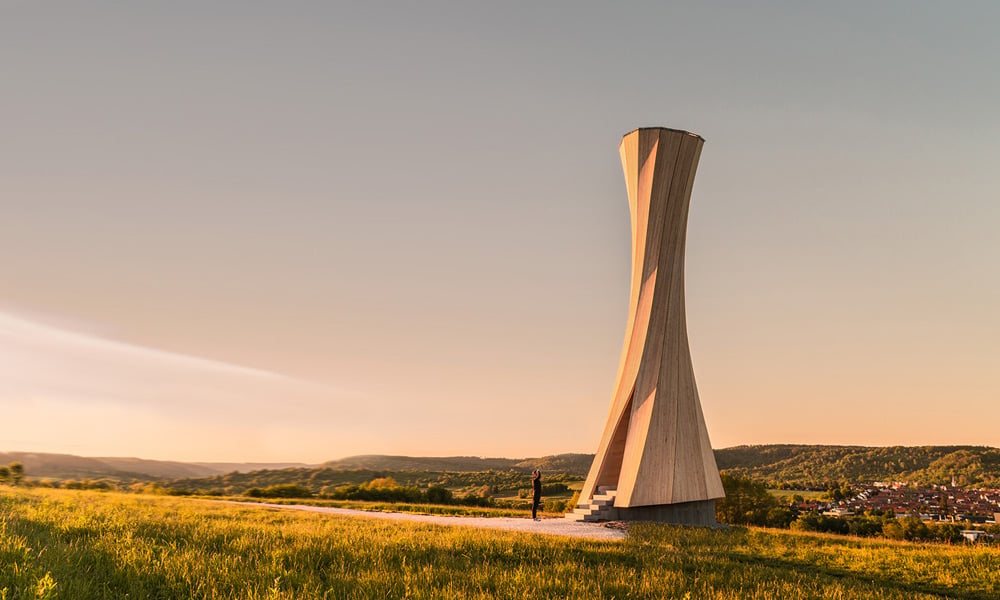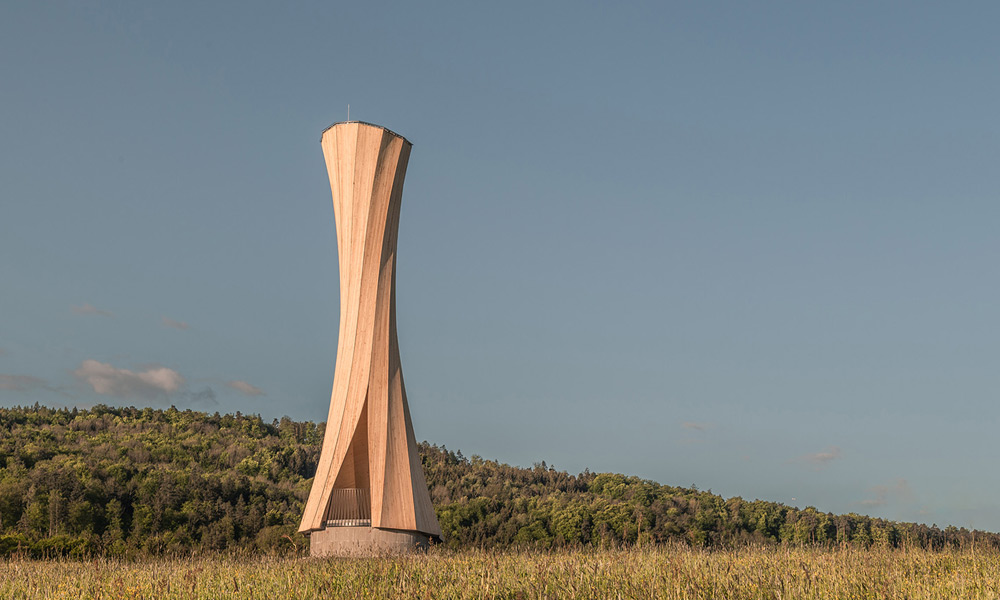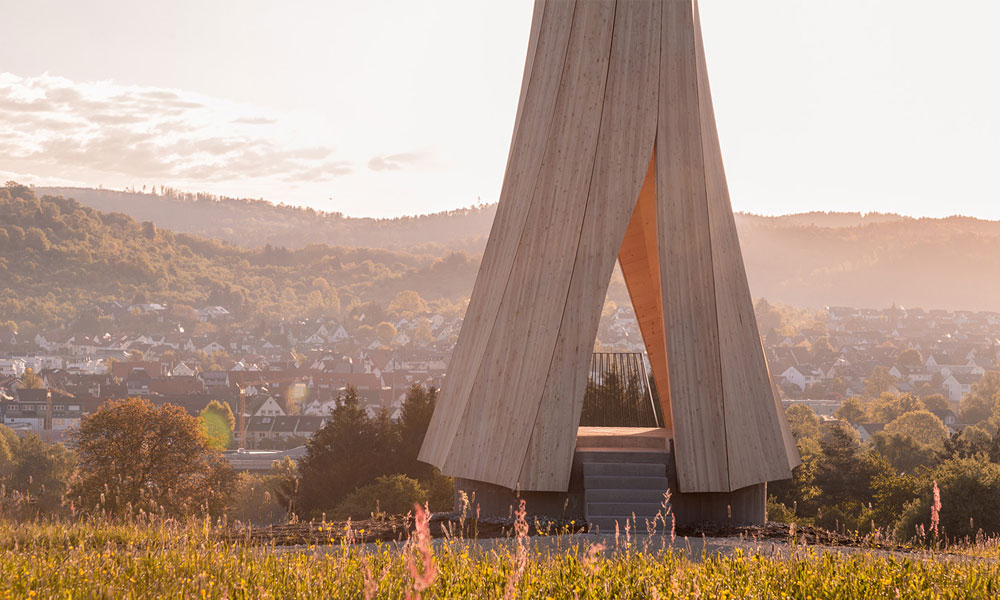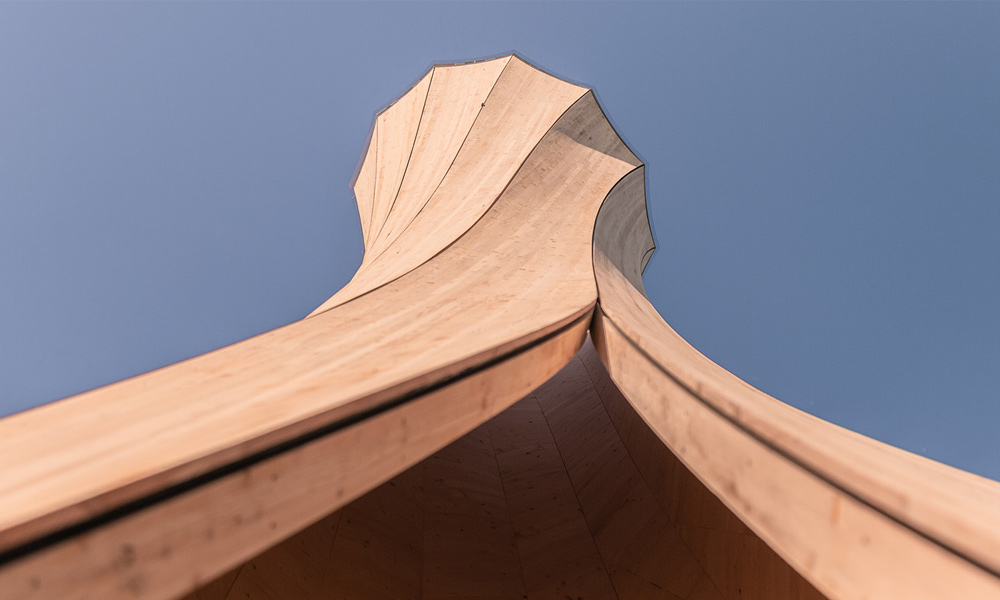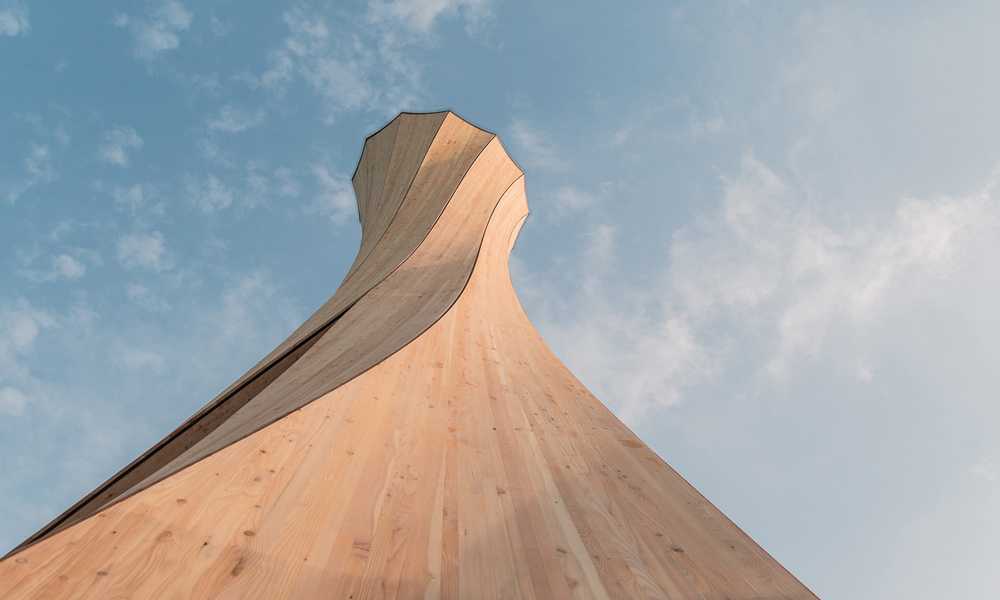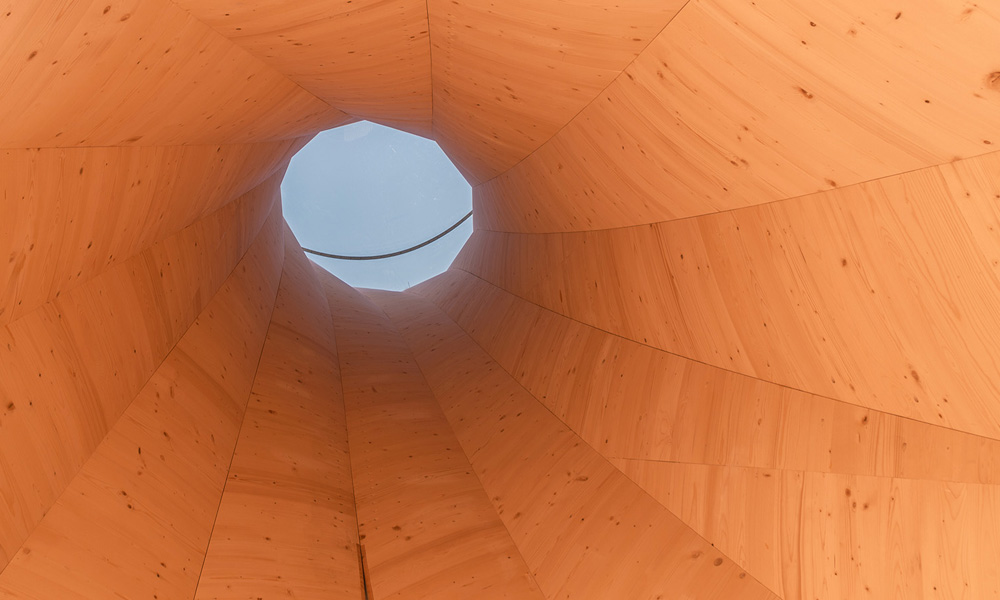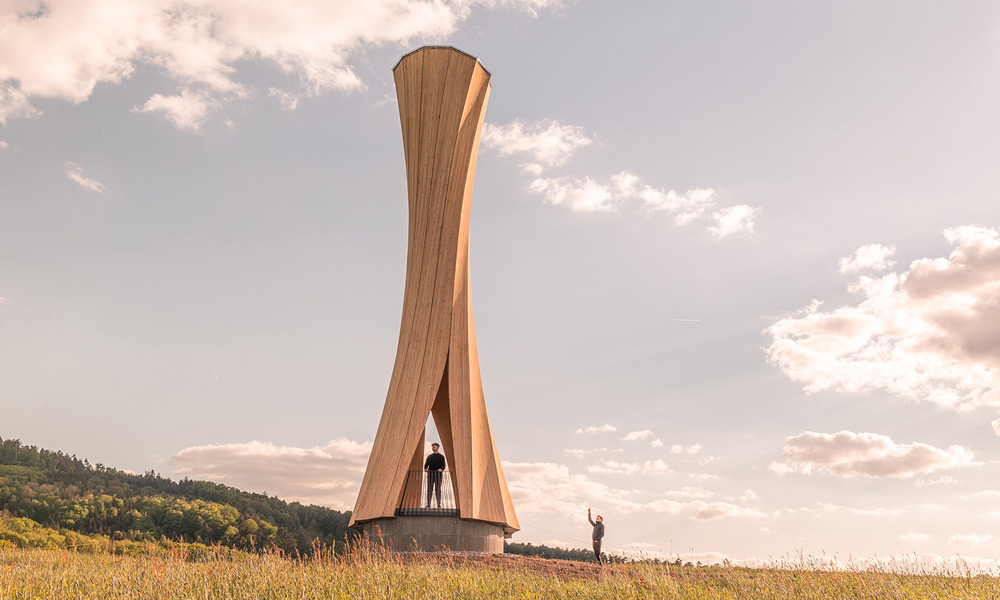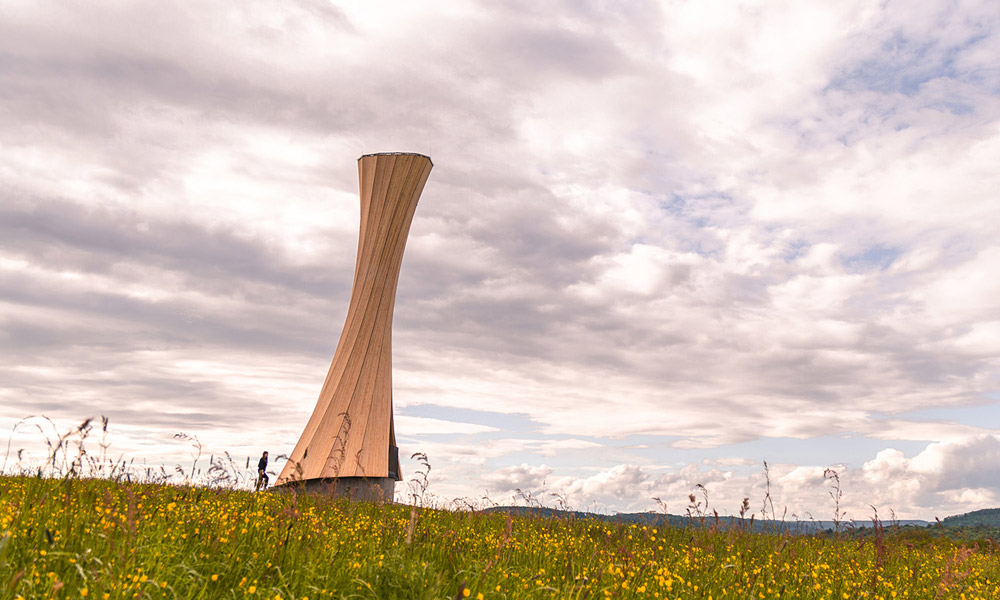The Urbach Tower is the first of its kind because its wooden structure twists on its own with moisture changes, and it’s completely intentional. Designed and created by the University of Stuttgart’s Institute for Computational Design and Construction, the tower uses warped Cross Laminated Timber (CLT) components that are built while the moisture content is high, then industrially dried. The result is curved plates that can be assembled quickly, and due to planned deformation in the design, the plates can alter shape when moisture levels change. In this case, spruce wood was used, but the method can be used for other woods, as long as grain orientation, thickness, and moisture change during drying are controlled appropriately to affect the curvature of the plates. The 45-foot tower was built in one day, covered in larch wood to protect it, and capped off by a translucent roof. Sensors monitor moisture levels, and the team will check on warping in the tower over the next ten years. This brilliant methodology could be applied to more complex structures and also reduce the costs and environmental impact of construction methods that are far more energy intensive.
More Travel

London Doesn’t Have to Be Lavish to Travel Well
Your smart, stylish, and affordable guide to visiting the UK capital.

The Charm of Canandaigua, New York
The perfect friend trip for 2026.
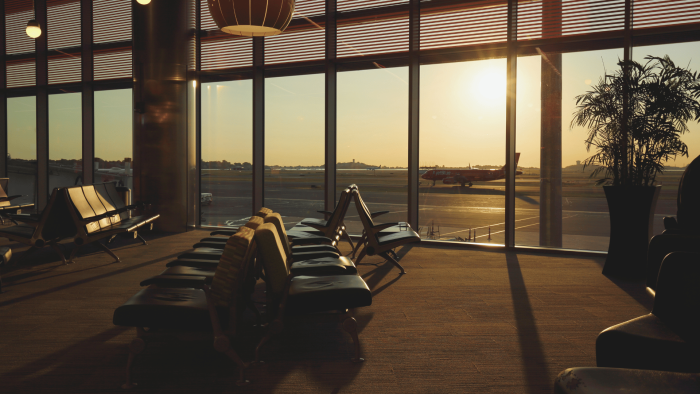
Low-Season Destinations to Visit in the Fall and Winter
Avoid the crowds. Travel on the low.

